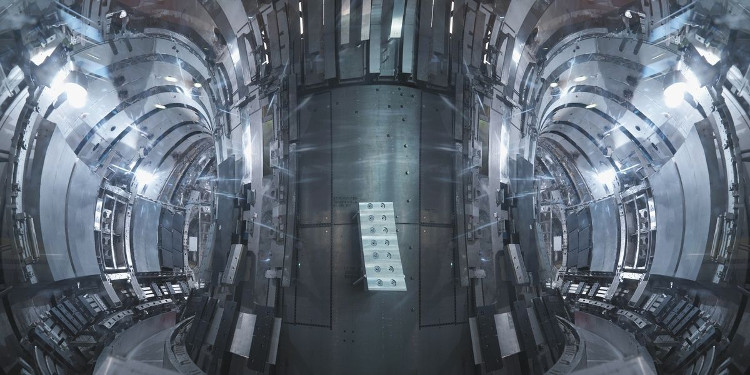Superheated helium balloons,
Superheated helium gas passes through the metal and leaves pores that weaken and gradually destroy.
Scientists study new materials to solve the phenomenon of metal-destroying helium bubbles , considered "nightmares" in nuclear fusion reactors, according to Popular Mechanics.

Helium bubbles are a problem in nuclear fusion reactors.(Photo: Popular Mechanics).
Nuclear fusion reactors heat up hydrogen by millions of degrees Celsius to form helium in a fusion reaction. However, this process often requires a large amount of input energy to start the reaction, possibly more than the energy generated.
In addition to determining the appropriate ratio of hydrogen ions, deuterium, helium-3 and finding ways to heat the mixture to produce fusion reactions, experts must address an important problem, is how to design a reactor that can withstand the extreme temperatures and pressures of nuclear fusion.
In nuclear fusion reactors, the mixture of plasma of helium gas produced by heating hydrogen to hundreds of millions of degrees C can penetrate metal parts. When helium passes through solids, it will form bubbles similar to CO 2 bubbles in carbonated drinks.
These bubbles will leave many holes in the metal and gradually weaken the structure of the components in the reactor. Although they obtain positive energy reactions, they can also destroy the reactor before the energy level can compensate for the initial construction cost.
"The helium bubbles inside the metal will be there forever because the metal is solid. The more helium accumulates, the more bubbles begin to bind together and destroy the whole metal , " Michael Demkowicz, Professor at Texas A&M University, said.
Demkowicz and his colleagues collaborated with researchers at Los Alamos National Laboratory to find a new solution. They examined the effect of helium bubbles on nanocomposite , a solid material consisting of a thin layer of metal, width less than 50 nanometers, sandwiched between thicker metal layers. In this case, the team placed a thin layer of copper between the thick layers of vanadium, then pumped helium into the copper.

Helium forms grooves when passing through nanocomposite.(Photo: Texas A&M).
Scientists were surprised to find helium creating grooves on nanocomposite instead of bubbles like with conventional metals. If the grooves form a stable network for the helium to pass through, the material may be more durable than the metals used in the nuclear synthesis experiment.
"We are excited by what we have seen. When more and more helium enters the nanocomposite, the helium grooves begin to connect with each other instead of destroying this material and creating a kind of vascular system , " Demkowicz said.
In addition to creating new materials that are more resistant to nuclear fusion reactors, Demkowicz believes that new discoveries can be applied to many other scientific studies.
"Applications in nuclear fusion reactors are just the tip of the iceberg. I think the broader applicability lies in creating grooves in solids, like tissues with vascular systems. We will transport them. What can be passed through such circuit systems? It could be heat, electricity, even chemicals that help the material to resume itself, " Demkowicz commented.
- How was Helium gas generated?
- Why does the ball fly in the air?
- Many Helium gas mines were discovered with huge reserves, not worried about exhausting energy
- Why does the balloon explode?
- Scientists have just created a stable helium compound
- The superheated rock
- The world's thinnest ice is only one atom thick
- Burns from balloons exploded - explaining phenomena
- Discover the world's largest helium mine
- Mysterious giant planet with a helium trail behind
- Many children are sucking the poison into their mouths
- European children will no longer be able to blow balloons
 'Fine laughs' - Scary and painful torture in ancient times
'Fine laughs' - Scary and painful torture in ancient times The sequence of numbers 142857 of the Egyptian pyramids is known as the strangest number in the world - Why?
The sequence of numbers 142857 of the Egyptian pyramids is known as the strangest number in the world - Why? History of the iron
History of the iron What is alum?
What is alum?